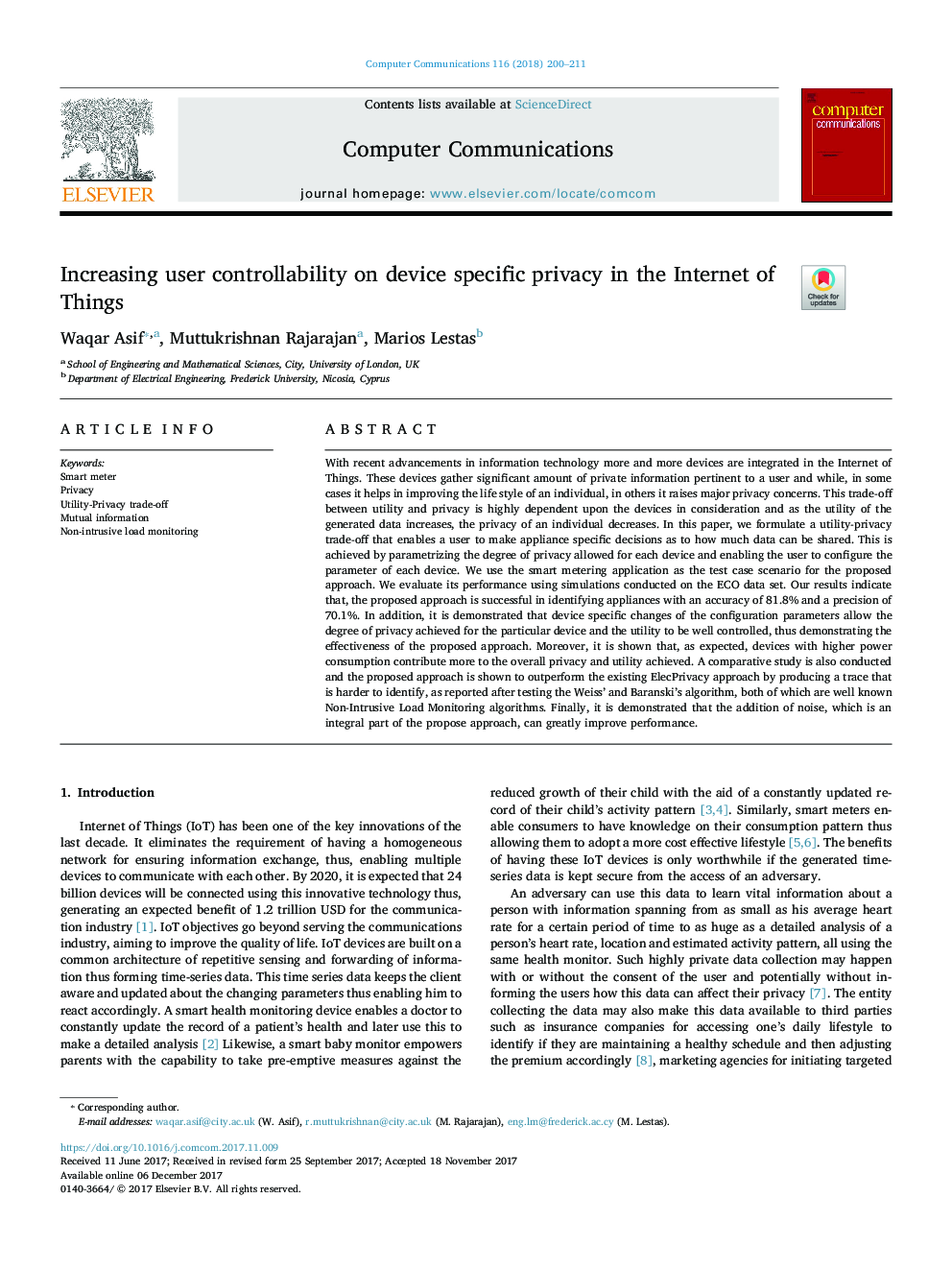| Article ID | Journal | Published Year | Pages | File Type |
|---|---|---|---|---|
| 6880155 | Computer Communications | 2018 | 12 Pages |
Abstract
With recent advancements in information technology more and more devices are integrated in the Internet of Things. These devices gather significant amount of private information pertinent to a user and while, in some cases it helps in improving the life style of an individual, in others it raises major privacy concerns. This trade-off between utility and privacy is highly dependent upon the devices in consideration and as the utility of the generated data increases, the privacy of an individual decreases. In this paper, we formulate a utility-privacy trade-off that enables a user to make appliance specific decisions as to how much data can be shared. This is achieved by parametrizing the degree of privacy allowed for each device and enabling the user to configure the parameter of each device. We use the smart metering application as the test case scenario for the proposed approach. We evaluate its performance using simulations conducted on the ECO data set. Our results indicate that, the proposed approach is successful in identifying appliances with an accuracy of 81.8% and a precision of 70.1%. In addition, it is demonstrated that device specific changes of the configuration parameters allow the degree of privacy achieved for the particular device and the utility to be well controlled, thus demonstrating the effectiveness of the proposed approach. Moreover, it is shown that, as expected, devices with higher power consumption contribute more to the overall privacy and utility achieved. A comparative study is also conducted and the proposed approach is shown to outperform the existing ElecPrivacy approach by producing a trace that is harder to identify, as reported after testing the Weiss' and Baranski's algorithm, both of which are well known Non-Intrusive Load Monitoring algorithms. Finally, it is demonstrated that the addition of noise, which is an integral part of the propose approach, can greatly improve performance.
Related Topics
Physical Sciences and Engineering
Computer Science
Computer Networks and Communications
Authors
Waqar Asif, Muttukrishnan Rajarajan, Marios Lestas,
